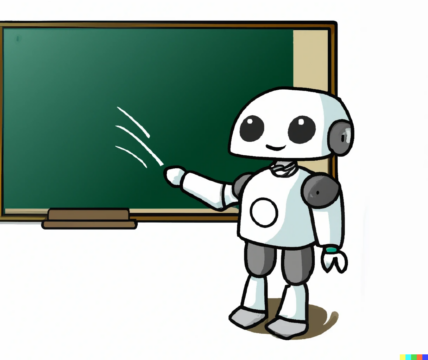India has one of the largest education systems, constituting some 320 million young learners. During the pandemic, education has gone through an overhaul in this country, but now schools have reopened. That means children now have little time to study online, and parents are willing to get back to old ways of study.
This, and other reasons, are posing a challenge for the online education businesses that have thrived during the pandemic. Every quarter, EdTech platforms are expected to experience a decrease in business.
Has the reopening of schools become a challenge for India’s EdTech industry? Was online education just a bubble that has burst or will it recover from the current dip in business?
The Tech Panda asked two EdTech entrepreneurs about what’s happening with the EdTech sector and if there’s a danger of a shrunk sector.
“As the world returns to normalcy post pandemic, parents have realised that pure online lecturing is not striking the chord anymore for right learning with students,” says Vivek Varshney, Founder, SpeEdLabs.

Vivek Varshney
As the world returns to normalcy post pandemic, parents have realised that pure online lecturing is not striking the chord anymore for right learning with students
“Due to the lack of interaction, personalisation and coordination between students and teachers, the 100% online mode is proving to be ineffective. As a result, several well-funded online tutoring startups are closing down, and even in the B2B space, the traction of unlimited online live classes and recorded lectures – which was the main value proposition offered by basic ERP and LMS platforms – is slowly withering away,” he explains.
After being introduced to the online education mode, students are looking at analytics-driven impact solutions that will offer personalised feedback and inputs to help them improve their studies and score more.
“This calls for a renewed approach of a blended, hybrid model of learning. The next wave of innovation has to be oriented towards academic improvement with a blend of personalised learning experience and data analytics,” he further adds.
Sharad Bansal, Co-founder, Tinkerly, says EdTech has its own segments, and in his opinion, each will have a different impact of pandemic or school reopening. He explains with examples.

Sharad Bansal
Sustaining the growth in models that were substituting schools or tuitions will be challenging
“As of now, a majority of schools get reopened. So, offline learning will continue to be a part of the future for academic subjects taught in schools. Sustaining the growth in models that were substituting schools or tuitions will be challenging,” he says with regards to academics.
He explains that test prep is a segment that will grow in combination with offline.
“Some major EdTech players like Byjus have opened offline centres, Unacademy opening their experience centres, both have acquired a fair share of the digital market, and are now going offline for deeper penetration to the grassroots levels. So, this is the segment that will grow in the blended form.”
Another area of growth, he says, is Tier 2 and 3 India, stemming from a lack of quality education pandemic or not.
“Co-curricular K12, online quality solutions are not available locally (no local competition). While the growth in niche tier 1 market might not be as high, in a tier-2 city like Gwalior, it is very hard to find a Coding/Robotics teacher in your locality. Thus, Tinkerly or similar companies providing curated offerings for Bharat users are poised to grow exponentially.
“Online courses are empowering a small-town state board school student to be at par with an IB student in terms of technical skills. Parents, who have themselves faced this disparity, realize the value of these skills and are ready to invest in them,” he says.
Offline vs. Online: What Do Parents Want?
In spite of the conveniences of online education, the real time connection in an offline class means more control on a classroom environment. Online education largely comprises online lecturing, which is not the most effective way of learning.
Varshney explains that parents have realised this during the pandemic, but since there was no alternative, they accepted online lectures.
There is no proper monitoring, control, interaction, connection between teachers and students, lack of self-discipline. Hence, parents are sending their kids for offline engagement for their education
“As we are returning to normalcy, parents want their children to opt for offline tutoring. There is no proper monitoring, control, interaction, connection between teachers and students, lack of self-discipline. Hence, parents are sending their kids for offline engagement for their education – be it coaching centres or home tutoring,” he says.
“Offline classes are back, and people have understood the instrumental role of physical connect, complete tracking of progress, real-time questions/ checking notes, peer-to-peer learning and the overall environment for learning it offers,” he adds.
Another point in favour of offline lectures is the absence of social media distractions like YouTube.
On another hand, online learning can be cost effective, a factor that Bansal sees as the reason that parents incline towards online learning.
I believe that parents are keen to teach their kids new-age skills that go beyond academics. Most online solutions are very high quality and pocket friendly which increases the inclination of Indian parents toward online studies
“As per studies, it has come to light that the major goal of Indian parents is that they want their children to build successful careers. However, at the same time, they are price sensitive,” he says.
“During the pandemic period, parents experienced the power of online learning. Since technologies like AI and automation are in huge demand, they understand that online courses on these skills such as coding, robotics, and AI can prepare their child for the jobs of the future.
“In my personal opinion that is based on market research, I believe that parents are keen to teach their kids new-age skills that go beyond academics. Most online solutions are very high quality and pocket friendly which increases the inclination of Indian parents toward online studies,” he adds.
Why Some EdTechs Aren’t Working Out
With the return of offline schooling, EdTech platforms are expected to experience a decrease every quarter in business. Several EdTech platforms are not growing at the pace that they were growing at during COVID.
Bansal says this is normal because of the baseline effect and other reasons as well. For example, some new marketing entrants lead to more options and price competition, while some offerings are not customised for the affordable segment. Also, fund inflow has slowed down in the market.
Bigger EdTech companies need to bring affordable, vernacular courses and light mobile-friendly solutions. They can possibly join hands with regional players or younger startups who have already developed such products or channels
“During COVID, while the demand was growing, supply was limited. Thus, bigger brands like Byjus and Unacademy were able to grow despite their premium pricing and generalised offering. But Indian customers are smart, and parents are now making more informed decisions to choose the right product for their children,” he says.
He cites the example of relatively newer online test prep companies like Physics Wallah and Utkarsh classes app, which have been targeting the low-cost market and have grown phenomenally.
Platforms like Tinkerly has adopted unique distribution channels to enter the tier-2 market with a vernacular offering, and in just 2 months over 60% of its users are coming from this market.
“Bigger EdTech companies need to bring affordable, vernacular courses and light mobile-friendly solutions. They can possibly join hands with regional players or younger startups who have already developed such products or channels,” he advises.
Varshney explains that many EdTech platforms haven’t offered all the elements of EdTech and hence are faced with short-term success.
Eventually, the problem that has to be solved is the rise in scores and the aptitude development of students. Many investors funded companies that were going with the trend caused due to the pandemic and were solving problems with the wrong approach
“If we are considering the term EdTech to be synonymous to recorded online lecturing, then that is oversimplification of the overall service and does not provide the true picture. Edtech has different elements in the process,” he explains.
He explains that lecturing is just 25% of the online process, the rest 75% comprises online self-study, revisions, improvement plans, assignments, testing, analytical feedback, and assessment.
Read more: It’s time coding enters the post-pandemic K-12 EdTech sector
“All of these are elements of EdTech, and no major players have forayed into these aspects. Most existing players have gone for low-hanging tools like recorded lectures and online lessons. Investments have also gone after them, and that’s the reason over 100 companies have shut down, who wanted to operate in purely online format despite sizable funding,” he says.
“Eventually, the problem that has to be solved is the rise in scores and the aptitude development of students. Many investors funded companies that were going with the trend caused due to the pandemic and were solving problems with the wrong approach,” he adds.












